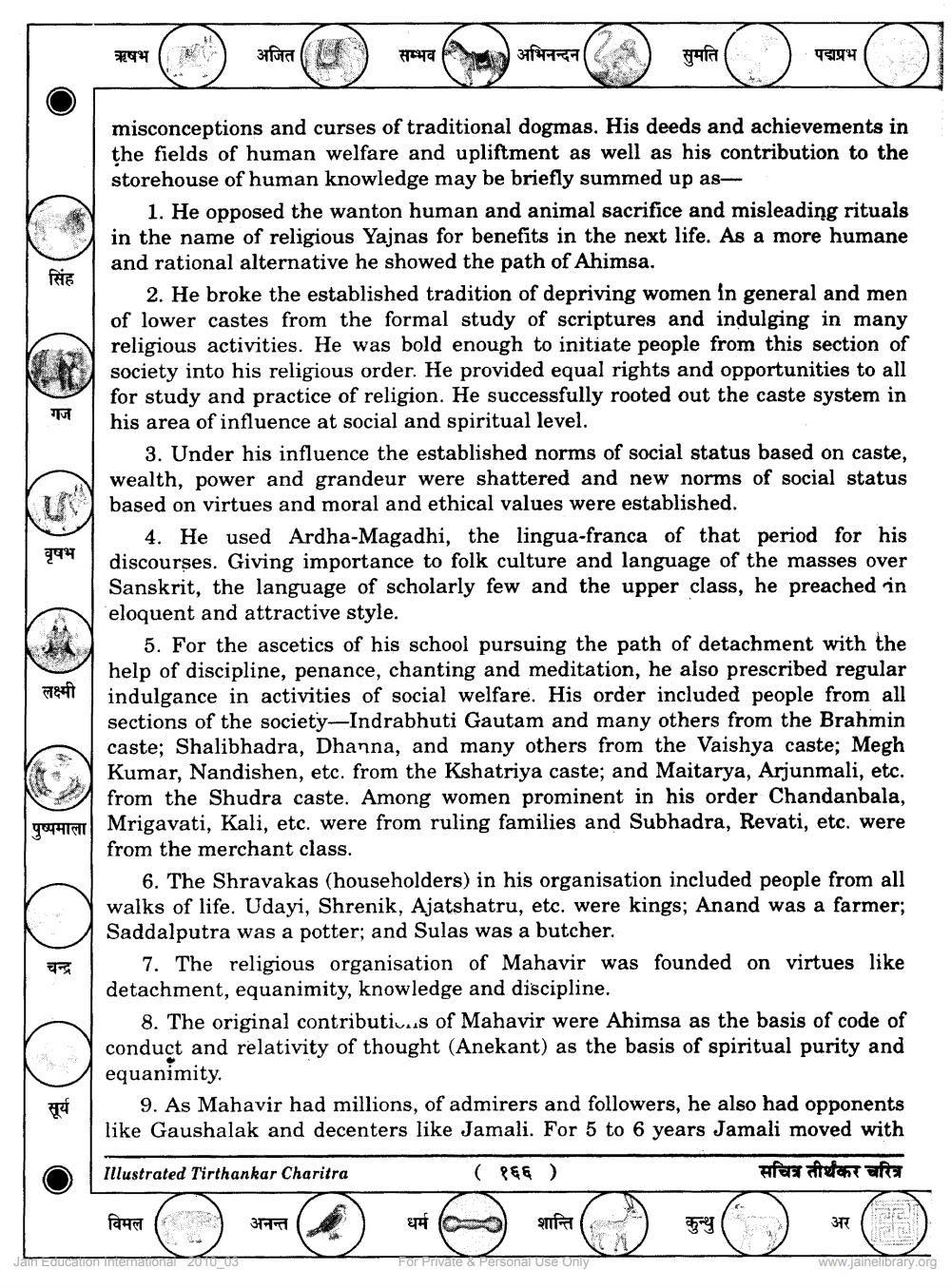________________
ऋषभ
अजित
सम्भव
अभिनन्दन
सुमति
पद्मप्रभ
सिंह
वृषभ
misconceptions and curses of traditional dogmas. His deeds and achievements in the fields of human welfare and upliftment as well as his contribution to the storehouse of human knowledge may be briefly summed up as
1. He opposed the wanton human and animal sacrifice and misleading rituals in the name of religious Yajnas for benefits in the next life. As a more humane and rational alternative he showed the path of Ahimsa.
2. He broke the established tradition of depriving women in general and men of lower castes from the formal study of scriptures and indulging in many religious activities. He was bold enough to initiate people from this section of society into his religious order. He provided equal rights and opportunities to all for study and practice of religion. He successfully rooted out the caste system in his area of influence at social and spiritual level.
3. Under his influence the established norms of social status based on caste, wealth, power and grandeur were shattered and new norms of social status based on virtues and moral and ethical values were established.
4. He used Ardha-Magadhi, the lingua-franca of that period for his discourses. Giving importance to folk culture and language of the masses over Sanskrit, the language of scholarly few and the upper class, he preached in eloquent and attractive style.
5. For the ascetics of his school pursuing the path of detachment with the help of discipline, penance, chanting and meditation, he also prescribed regular indulgance in activities of social welfare. His order included people from all sections of the society--Indrabhuti Gautam and many others from the Brahmin caste; Shalibhadra, Dhanna, and many others from the Vaishya caste; Megh Kumar, Nandishen, etc. from the Kshatriya caste; and Maitarya, Arjunmali, etc. from the Shudra caste. Among women prominent in his order Chandanbala, Mrigavati, Kali, etc. were from ruling families and Subhadra, Revati, etc. were from the merchant class.
6. The Shravakas (householders) in his organisation included people from all walks of life. Udayi, Shrenik, Ajatshatru, etc. were kings; Anand was a farmer; Saddalputra was a potter; and Sulas was a butcher.
7. The religious organisation of Mahavir was founded on virtues like detachment, equanimity, knowledge and discipline.
8. The original contributivus of Mahavir were Ahimsa as the basis of code of conduct and relativity of thought (Anekant) as the basis of spiritual purity and equanimity.
9. As Mahavir had millions, of admirers and followers, he also had opponents like Gaushalak and decenters like Jamali. For 5 to 6 years Jamali moved with
लक्ष्मी
पुष्पमाला
सूर्य
Illustrated Tirthankar Charitra
( PE )
सचित्र तीर्थकर चरित्र
JATEDucation international UTULUS
For Private & Personal use only
www.jainelibrary.org




